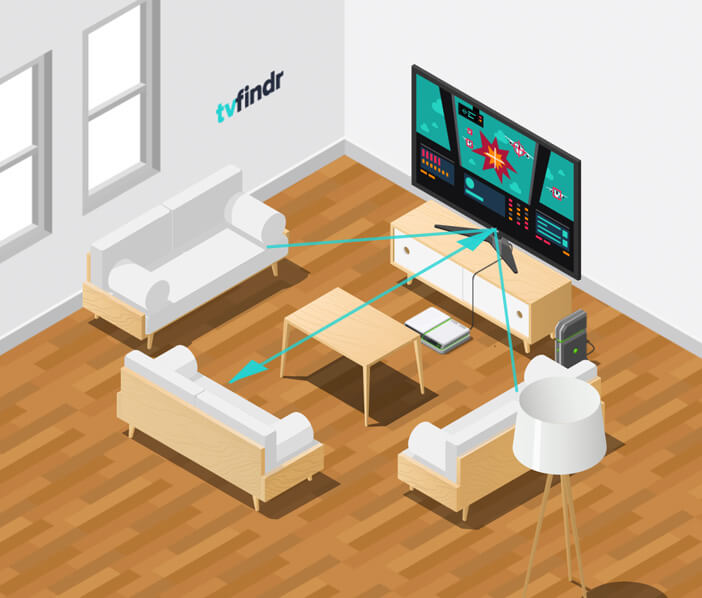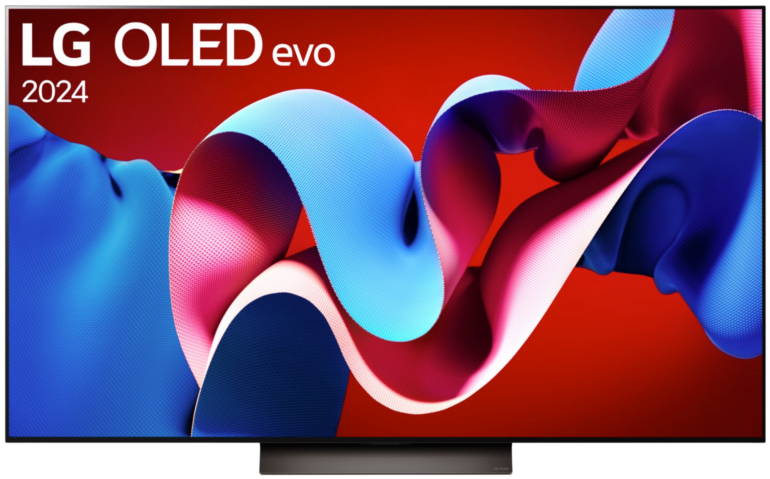Best QLED TVs 2022/11
In the high-end sector, not only OLEDs are a good choice for the living room. QLED TVs can also score with a great picture experience and are perfect for bright rooms. Like LED TVs, Quantum Dot technology relies on backlighting, which was significantly improved by Mini LED technology in 2021.
Nothing for you to find? In that case, why not use our TV buying guide or take a look at our tv toplist. There you will find a complete selection of our listed TVs and can set filters completely individually in order to find your perfect TV.
Hey! If you buy through our links, you support our project. It won't cost you a cent more! Many thanks in advance! ♥️
The best QLED TV: Samsung QN95B
If you are looking for an extremely bright TV, Samsung offers you top performance with the successor of the QN95A. The panel has a peak brightness of about 2200 nitsSI unit of luminance: 1 nit = 1 cd/m2 – The best way of measuring and comparing a TVs brightness .
In combination with a large number of light zones, the QN95B’s screen ensures a precise display and fine gradation of brightness as well as great color reproduction. To achieve this, the South Korean electronics manufacturer gave its flagship a 14-bit HDRHigh Dynamic Range – image/video with more dynamic range (contrast range) mapping. Thanks to the high picture stability, practically nothing will get in the way of a TV evening with guests, even from oblique perspectives.
With the freely positionable One Connect Box, you can eliminate cable clutter and never have to bend behind or around the TV housing again. Native Dolby Atmos speakers further set the mini LED TV apart from many competitors. For gaming enthusiasts, the full range of feature diversity has been put on the spec sheet.
Starting with four full-fledged HDMI 2.1 ports with ALLMAuto Low Latency Mode – Automatically detects connected consoles and keeps input lag as low as possible., FreeSyncVariable Refresh Rate with AMD graphics cards or consoles Pro, G-SyncVariable Refresh Rate for Nvidia graphics cards and the Gamebar, which clearly summarizes all functions for you. Only Dolby Vision is – as usual – not part of TVs carrying the Samsung label.
The 144 hertz panel also opens up the option of using the device as a second monitor on a computer. Thus, the Samsung Neo QLED QN95B is an excellent TV and almost the first choice for particularly bright ambient light at home.

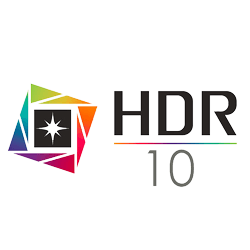

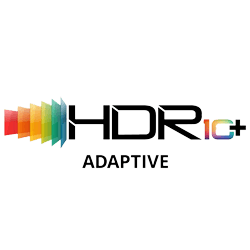
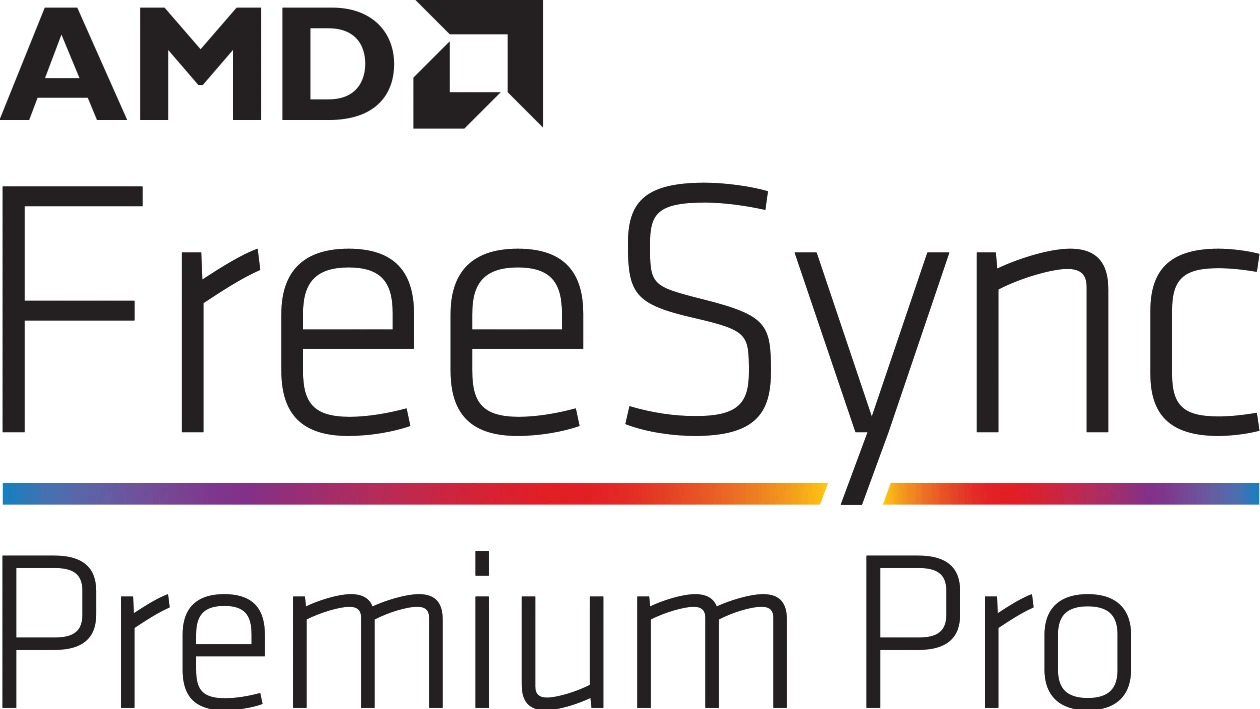


Best QLED of 2021: Samsung QN90A Neo QLED
The Samsung Neo QLED QN90A is this year’s 4K flagship and the best QLED TV 2021 in our listing. The novel Mini LED backlight allows the TV to become much brighter than the competition and reach a peak brightness of 1800 nits. The built-in VA panel allows the TV to produce a contrast ratio of 26000:1 as well as a deep, even black. The actually narrow viewing angle has also been taken care of and an Ultra Viewing Angle layer has been installed, which has significantly widened the viewing angle.
However, it has to be said that the QN95A artificially brightens HDR content, which is especially noticeable negatively in thriller or horror movies. The dark scenes are displayed much brighter, which does not create the right atmosphere.
The QLED also cuts a good figure in the gaming sector and has everything you could want for the new PlayStation 5 and Xbox Series X consoles. HDMI 2.1, ALLM, VRR with FreeSync Premium Pro as well as HDMI Forum VRR. Even a G-Sync compatibility is present and Samsung has developed interesting features especially for gamers, such as a Game Bar or the Panorama mode. However, since Samsung still relies on HDR10+ instead of Dolby Vision, Dolby Vision gaming is not possible with the QLED on the Xbox Series X.
Even though the One Connect Box is really practical, it unfortunately also has a downside. When gaming with new consoles, picture and sound dropouts can still occur. However, Samsung is aware of this problem and it could be fixed by an update in the future.
The smart features do not have to hide either and Tizen 6.0 still runs smoothly and can be controlled intuitively. You do not have to do without anything regarding apps and the solar-powered remote control makes the TV increasingly sustainable. Furthermore, both voice assistants are available and Apple devices are also supported.
Best price-performance-ratio: Hisense U8G
The Chinese manufacturer offers a great price-performance ratio and also convinces with great features that are sometimes even denied to high-end models. This is also the case with the Hisense U8G. It has a contrast ratio of 7900:1, a peak brightness of 1600 nits and Dolby Vision as well as HDR10+ that can put many other QLEDs far behind when it comes to picture performance. Unfortunately, the viewing angle is quite narrow due to the VA panel.
With great motion handling and surprisingly good gaming features, the U8G is also great for gaming. HDMI 2.1, VRR via FreeSync, HDMI Forum and a G-Sync compatibility lack nothing to put the latest consoles through their paces. Furthermore, even retro consoles can be connected without problems or adapters.
Neo QLED with an 8K: Samsung QN900A
If you are looking for the best 8K QLED, you should take a look at the Samsung Neo QLED QN900A. Compared to the QN95A, there is hardly any change, and if there is, the 4K model even performs better. However, the 8K TV impresses with its higher resolution, even though there is hardly any real content and the difference is only noticed by a few.
With a contrast of 20400:1 and a peak brightness of 1650 nits, the QN900A can not only get very bright, but also display bright highlights great. The Mini LED backlighting gives the TV even more dimming zones, making HDR content look just great.
The only downer here is the lack of Dolby Vision. The wide viewing angle allows the whole family to enjoy movies and series together. Gamers can also enjoy great performance, as HDMI 2.1, VRR, ALLM and good motion handling are present.
Mini LED with XR Triluminos Pro: Sony X95K
Mini-LED TVs are now also available in Sony’s portfolio. The current performance peak is marked by Sony’s X95K. Compared to its predecessor, this model is noticeably brighter and can thus perform well in comparatively bright room light.
The luminance peak is above 1400 nitsSI unit of luminance: 1 nit = 1 cd/m2 – The best way of measuring and comparing a TVs brightness . Particularly fine details come out better this way. The X95K also shows its strength in terms of gamut thanks to the XR Triluminos Pro function and thus offers you a high color fidelity.
Local Dimming ensures a more precise screen illumination and counteracts the so-called blooming. This in turn ensures deeper black and, as a result, a wider contrast range. However, the Sony does not manage completely without blooming. Very bright objects on a dark background show a visible shimmer towards the edges.
The Cognitive Processor XR takes care of the calculations. Sony combines the so-called X-Wide Angle layer with the X-Anti Reflection coating for a good viewing angle with a low-reflection panel. This allows the TV to maintain good picture performance even from a fairly oblique view and handles reflections well.
Gamers can enjoy the full HDMI 2.1 bandwidth and a variable frame rate via VRRVariable Refresh Rate – synchronizes the display’s refresh rate with the output refresh rate of the graphics card. An HDR automatic and 4K at 120 frames per second are also offered by the X95K. The response time of a TV in this price range should not be missing either. It is around 4 milliseconds and allows for a clear picture even in fast scenes. A 120 HertzHertz is the derived SI-unit of frequency with 1Hz=1/s – When talking about TVs this means how many different pictures a TV can display in one second. panel is an integral part of the TV’s design and ensures fabulous motion handling.
Its predecessor with Triluminos: Sony X95J
Different manufacturer, different name for a similar technology. The Sony X95J also has an LED display, but uses the quite similar Triluminos technology to optimize the colors of the picture. This results in a very natural, true-color image, which will amaze home theater fans in particular.
The contrast of the VA panel is significantly lower at 4050:1, but the Full Array Local Dimming does a good job here. In addition, the XR processor, which was also installed in the OLED models, offers great performance, excellent picture optimization and good upscaling. Furthermore, the TV features Dolby Vision, which ensures dynamic picture optimization.
While the motion handling is excellent on the Sony X95J, the TV can’t quite convince gamers. It does have HDMI 2.1 ports, making 4K@120Hz possible, but other features are missing to really enjoy the new consoles to the fullest. A VRR is completely missing, even though an update is promised again and again. Furthermore, there is no real ALLM, but only an Auto Picture Mode, which only really works with the PlayStation 5.
The 8K giant: Sony Z9J
An expensive but superior alternative is the Sony Z9J Master Series, whose 8K resolution definitely takes a back seat here. Hardly any other TV can compete with its great image processing. Although it “only” offers a contrast ratio of 5000:1 with comparatively few dimming zones, Sony’s image processing is so good that there are hardly any picture errors like Blooming. Sony is also known for displaying the most natural picture thanks to the XR Triluminos Pro technology. With the Z9J, you definitely get a high-end device in your home, which will especially inspire home cinema fans.
The Z9J is only suitable for gaming to a limited extent, since it does not offer VRR and there are much better and more affordable devices in this respect. Whether you need the 8K resolution is up to you. However, it is a fact that there is hardly any real content for it and often no difference between 4K and 8K is noticed.
The best QLED TVs in comparison
| TV | Model year | Panel | Resolution | HDMI | HDR | Rating HDR Picture QualityMovies & SeriesGamingViewing Angle | Sizes | |
|---|---|---|---|---|---|---|---|---|
The best QLED TV: | ||||||||
Recommended  | Samsung QN95B | 2022 | VA | 4K/UHD | 4x HDMI 2.1 (4K@120Hz) ARC eARC | HDR10 HLG HDR10+ Adaptive HDR10+ | HDR Picture Quality Movies & Series Gaming Viewing Angle | |
Alternative  | Alternative: Samsung QN90A Neo QLED | 2021 | VA | 4K/UHD | 1x HDMI 2.1 (4K@120fps) ARC eARC | HDR10 HLG HDR10+ | HDR Picture Quality Movies & Series Gaming Viewing Angle | |
Alternative  | Alternative: Hisense U8G | 2021 | VA | 4K/UHD | 2x HDMI 2.1 (4K@120fps) ARC eARC | HDR10 HLG HDR10+ Dolby Vision | HDR Picture Quality Movies & Series Gaming Viewing Angle | |
Alternative  | Alternative: Samsung QN900A | 2021 | VA | 8K | 4x HDMI 2.1 (4K@120fps) ARC eARC | HDR10 HLG HDR10+ Adaptive HDR10+ | HDR Picture Quality Movies & Series Gaming Viewing Angle | |
Mini LED with XR Triluminos Pro: | ||||||||
Recommended  | Sony X95K | 2022 | VA | 4K/UHD | 2x HDMI 2.1 (4K@120fps) ARC eARC | HDR10 HLG Dolby Vision | HDR Picture Quality Movies & Series Gaming Viewing Angle | |
Alternative  | Alternative: Sony X95J | 2021 | VA | 4K/UHD | 2x HDMI 2.1 (4K@120fps) ARC eARC | HDR10 HLG Dolby Vision | HDR Picture Quality Movies & Series Gaming Viewing Angle | |
Alternative  | Alternative: Sony Z9J | 2021 | VA | 8K | 2x HDMI 2.1 (4K@120fps) ARC eARC | HDR10 HLG Dolby Vision | HDR Picture Quality Movies & Series Gaming Viewing Angle | |
Other noteworthy TVs
Samsung The Frame
The lifestyle TV Samsung The Frame is something very special and a real designer piece. The popular TV convinces with its unique design and fits into every home, where the TV is allowed to disguise itself as a picture.
Because mounted on the wall, The Frame can easily disappear in a picture gallery. So the design is definitely in the foreground of the model and can be complemented by various accessories such as interchangeable frames or the shelf The Shelf.
Besides the unique design, The Frame can also convince with solid values. It offers a good picture in dark surroundings due to a contrast ratio of 5600:1, even though the viewing angle of the VAVertical Alignment, type of LCD Panel panel is very narrow.
You can also use The Frame for occasional gaming, even though you cannot expect a graphical masterpiece here. All in all, however, it is all about the design with The Frame, since there are clearly better devices in all other areas.

Hisense U6G
Anyone who wants a good but inexpensive QLED can pick up the Hisense U6G. Of course, the TV does not offer all high-end features, but it can still convince especially in terms of picture quality and function as a good Smart TV.
With a contrast ratio of 4750:1 and deep blacks, especially home theater fans will get their money’s worth. Dolby VisionDynamic HDR-format with a color depth of up to 12 Bits and Mastering of up to 10,000 Nits and HDR10+License-free, dynamic HDR-format in competition with Dolby Vision are available for dynamic picture optimization, which is really exceptional for the price.
Unfortunately, the viewing angle is quite narrow, which is why it is not suitable for large groups. You should not expect too much in gaming either, but gaming is still fun since the input lag is low. However, you will not find an HDMI 2.1 port.


As a studied technology journalist Tobi likes to write regularly about the colorful world of TV sets & Co. Further interests: Music, cars, gaming, soccer
- The best QLED TVSamsung QN95B
- Mini LED with XR Triluminos ProSony X95K
- The best QLED TVs in comparison
- Other noteworthy TVs
- Quantum Dot Technology
- Questions about QLED What technology is a QLED TV based on?Is there a burn-in risk with the QLED?
Quantum Dot Technology

For a large color volume in bright rooms
There are various technologies on the market to optimize picture quality and each technology comes with its advantages and disadvantages. One of them is Quantum Dot technology, which Samsung uses under the brand name QLED since 2017. However, not only Samsung uses Quantum Dot technology in their devices, but also Sony or LG, just under a different term.
Quantum Dot TVs basically use an LCD panel with an LED backlight. In between, the TVs have the Quantum Dot layer, which filters the light and thus produces purer and richer colors. In addition, QLED TVs are usually much brighter and can thus be used in light-flooded rooms without any problems, since they can handle reflections better. As a result, brighter colors in particular can be displayed much better than the OLED competition, for example, since a QLED can achieve a much higher peak brightness. The new Mini LED technology established in 2021 can now achieve even better contrast and higher brightness.
Finally, there is the distinction between a VAVertical Alignment, type of LCD Panel and IPSIn-Plane Switching, type of LCD Panel/ADS panel, with most TVs using Quantum Dot technology relying on a VA panel. This achieves a much higher contrast and a local dimming function also improves the black level. Unfortunately, VA panels usually offer a narrow viewing angle, but high-end devices in particular mostly have an additional layer to widen the angle. IPS/ADS panels offer a wide viewing angle in this respect, but the contrast ratio is significantly lower and black looks rather grayish, which unfortunately worsens the overall picture quality.
While there is always a minimal burn-in risk with OLED TVs, QLEDs are not affected by this. Therefore, Quantum Dot TVs are also very suitable for waiting rooms or as info panels, where static content is often displayed, or as PC monitors. The larger selection of different sizes is also advantageous here, which is not the case with most OLED TVs.
Questions about QLED
What technology is a QLED TV based on?
The basis of QLED TVs is the LCDLCD = Liquid Crystal Display – a type of screen using liquid crystals for creating the image panel, which consists of liquid crystals and is illuminated by an LED backlight. If the crystals are not illuminated, the screen remains black. The individual pixels of the panel consist of the colors red, green and blue and regulate the different hues, while the lighting regulates the brightness. Depending on the content, a wide variety of colors can be produced in this way. An equal proportion of red, green and blue produces a neutral white.
In a QLED TV, an additional film is now installed between the layer with the liquid crystals and the illumination, which ensures a stronger contrast ratio and more colors.
Is there a burn-in risk with the QLED?
No. Since QLEDs use a different technology than OLEDs, there is no burn-in risk. Therefore, the devices are also perfectly suitable as info panels or PC screens.






